How Doing Preview-Worthy Temp Comps in the Avid Saved Time During Assembly and Post
The life of Louis Zamperini, who passed away this summer at the age of 97, was as epic in its scale as it was in its scope. Even those unfamiliar with Laura Hillenbrand's compelling 2010 bestseller, Unbroken, about Zamperini or CBS News legend Bob Simon's seminal 1998 documentary about his life and involvement in the Nagano Winter Olympics likely have heard pieces of "Lucky Louie's" Homeric story arc: high school track star-turned-Olympic athlete from hardscrabble Torrance, CA, survives in a raft on the Pacific for 47 days after a near-fatal plane crash in World War II, then is interned for two and half more years at a series of harsh, demoralizing Japanese prisoner-of-war camps until liberated by the Americans at the end of the war.
That's only a part of Zamperini's fuller story, but it is the foundation of director Angelina Jolie's new film, which was shot on location in Australia by DP Roger Deakins with the ARRI Alexa XT and opens in North America on Christmas Day. (The CBS News documentary, for the curious, also features the first and only post-war interview with Zamperini's most merciless tormenter, the notorious prison guard Mutsuhiro "The Bird" Watanabe.) We talked to the movie's editors, Tim Squyres, ACE, who came on board at the outset of production, and William Goldenberg, ACE, who joined the team after the first cut in post, about the challenges of filming on a raft in open water, capturing the essence of Zamperini's grand story and how Zamperini himself made notes on the picture's eventual edit.
StudioDaily: I'm guessing, Tim, that your experience editing the open water raft scenes in Life of Pi, directed by your longtime collaborator Ang Lee, is what first interested the studio and Jolie.
Tim Squyres: Not really sure the whole story but for one reason or the other they wanted to talk to me. Although one of the first things we talked about when I first met Angelina was shooting in a wave tank and in the open ocean, and how you avoid too much movement and how you avoid making the audience seasick. We did a lot of tests on Life of Pi, where it was even more of an issue because it's 3D.
SD: What did those tests involve?
TS: Just little things. Do you fix the camera to the boat, or do you fix the camera to the earth and let the raft move through the frame? We discovered in Life of Pi that if you attach the camera to the raft or to the boat, you'll make people a lot more seasick a lot quicker. That wasn't what I expected but once we did it it was quite obvious. So that was a place to start the conversation. How much movement is acceptable? The worst thing you can do to an audience is, say, if you have the camera on the bow of the boat, and the boat is rocking side to side, and you're looking straight down at the horizon tipping back and forth. You can only take that for about 20 seconds before you start to feel a little queasy.
SD: Was it among the more difficult scenes to cut?
William Goldenberg: Louie and the two other men were out there for 47 days, so making it feel desperate and isolated and getting all the emotions to come with that, making you feel like they were out there for a really long time but not being boring, and making it exciting and engaging and emotional — having the story work on all those levels was hard to achieve. There was a lot of material but we also didn't want to make it too short so it felt too easy. We probably worked the hardest on that section to get it right.
SD: Did you have a larger than usual amount of footage to deal with?
WG: It was a lot, but it wasn't an overwhelming amount. It wasn't like the 350 hours on Zero Dark Thirty, which is probably the most I've ever had to work with. I think the largeness of the story could so easily slip into three distinct movies, so we were face with the challenge of trying to make it all one continuous narrative and feel that way. It was an overwhelming story, in a good way.
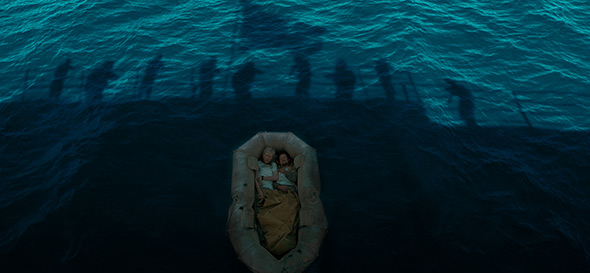
SD: Which was the first scene filmed and why?
TS: We started filming during the raft scene when the actors were at their thinnest in the raft. After we finished the wave tank, we shot the Kwajalein jungle prison camp, so the other two actors could go away for a few months and gain weight. We came back at the end and shot everything that happened in the bomber and before the plane crashed. Then we finished in the wave tank so they were normal weights at the start of the raft scene.
SD: Did the editorial team use any of the basic visual effects inside the Avid on this film?
WG: Yes, and in the raft sequence in particular. Ninety percent of it was shot in a wave tank in Australia. Water plates were shot, so the VFX assistants and assistant editors were able to comp in backgrounds in all those shots. They were rough, since you have a lot of the usual issues with hair against sky, but at the same time it gave you a real sense of what it would look like. They were also able to do it quickly, and it was a lot of shots, so it was extremely helpful. It was useful to show those not used to seeing raw footage like that. It gave it a reality that the raw just couldn't do.
TS: When you realize you can do split screens and carve up the frame and fix problems, [such as] changing the timing of something relative to something else, it is very enabling. We did some of those in After Effects and some in Media Composer. We did a lot of temp comps in the wave tank but we even did this for the open ocean shots. We were off the coast and you could see it in every shot. In the plane, every shot is an effects shot. We comped all that stuff in house before the visual effects people ever started working on it. In Avid, the tracking has gotten better and the keys have gotten pretty good. That allowed us to do more quality work in Composer. It used to be that you would put together comps that were good enough, but now you can put things together that are pretty darn good. You can go to preview with them, no problem.
SD: How did Jolie communicate her vision for the different tones and textures of each segment of the film?
TS: When I first met with her, she showed me her storyboards and talked about the different color schemes. But a lot of the tone, beyond the production design, comes from performances, and most of that happens as you shoot it. [Squyres assembled the film in New York on Avid Media Composer 7.1—he's currently beta testing version 8.3—during principal photography and was on location for the first week in Australia, sending cuts to Jolie as he worked.] You don't want to be too locked into exactly what's going to happen with the actors. We talked about the different feel that each location would have. In the raft, it's wide open spaces and stillness, and from there you go to this tiny, dark and damp prison cell in the jungle in Kwajalein. Then he's in a camp with hundreds of other guys, which is a whole new feel. It was important to get those tone changes right, and they mostly come from the situations he's in.
SD: Which scenes or transitions were the most challenging on this particular film?
TS: Whenever you have extended flashbacks, getting in and out of them is tricky. You have to do it in a way that's deliberate and meaningful, and you have to place the flashbacks themselves in a place that's meaningful. In this case, the way it was scripted, we begin in the bomber, then we flashback to his childhood and take that up to when he's heading to the Olympics, and then we go back and stay with him in the WWII story, then we go back again to the Olympics before returning to the war period. The funny thing is we tried all of that many, many different ways. There's always going to be some sense of not wanting the audience to be taken out of the story during a flashback. We tried making it one flashback, then making them into smaller flashback pieces to spread throughout the film. Where we ended up is exactly the way it was scripted. We felt confident that was the best one, because we tried everything else you could possibly think of! We needed to figure out the best way to do that. You won't make those transitions feel like a disruption if you do it in a way that's interesting and deliberate [and] you make an asset out of it. We spent a very long time on the transitions in and out of those flashbacks, as well. They tend to all be much more complicated than a simple cut or dissolve.
Sound was also a pretty big issue during the wave tank scenes. Outside of Brisbane, we were wedged in between a highway and an amusement park. You could hear people screaming on the rides. The sound was horrible. We had to do quite a lot of ADR, some of which we did fairly early. We had to keep doing ADR sessions and swapping things out just for it to be watchable. It just wasn't working during preview to be watching this nice quiet moment in the raft and then hear a truck go by. Our sound mixers did some incredible work filtering it, and we actually were able to preserve some of the production tracks. But it was still a lot of ADR. Similarly, in the plane some of the tracks were usable but it was built on a big gimbal that was hydraulically operated. Those noises are not native bomber noises. That was doubly tricky because the gimbal movements were in the same frequency as the actors' voices and it was hard to clean that up.
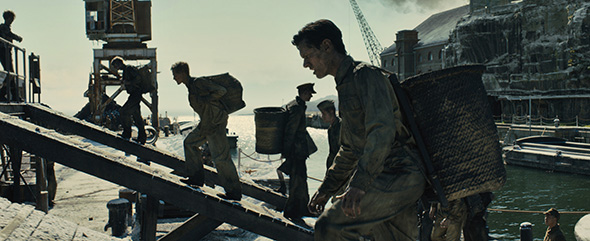
SD: What still takes your breath away when you watch the films at successive screenings?
WG: The last prison camp in Naoetsu is just so visually stunning to me. It has more to do with Roger's work than it does with mine. The whole scene of these coal-covered men deliberately moving against the white snow conveys a sense of bleakness and despair that is so stunning. The scene where he raises the beam over his head and defeats "The Bird" is just so exhilarating. The first cut I saw of that was just so inspiring.
TS: Listen, there are a lot of gorgeous shots in the film. I love that POV of young Louie watching his mother in the kitchen making gnocchi. The composition and the angle of the stairway and the door frame and the areas of darkness and light—just a beautiful, beautiful shot. And what was really great is there is a locked-off camera and she went through this whole process of making it. I wanted to show a good deal of that process because it is referred to later to keep the men focused in the raft. I was able to show those steps just by doing a series of slow dissolves. It wound up being a really elegant sequence.
SD: The film's narrative ends when Zamperini returns from the war and a condensed coda sums up in large strokes what came next for him. Was that coda of documentary footage hard to get just right?
WG: We were constantly tinkering with it right up until the end. His entire life would have been impossible to tell in one film but you always walk a fine line between getting enough of it across to complete the story but also not over-explaining it in a way that feels like we're not just laying information in there. In my experience, those things are always the last pieces that get tweaked until literally the very end of post.
TS: We didn't want to give the sense that we were ending the movie several times, so it became important to get the sense of flow just right. A lot of that really just involved the music. But, yeah, we spent a long time working on exactly what the cards on the end were going to say during that sequence.
SD: I understand Zamperini saw a rough cut of the film before his death in July.
TS: I'm not sure he ever watched a full cut, though I know he liked it. The first time Angie took a version over to his house on her computer, we'd cut out the scene where they pull a shark out of the water and Louie kills it by stabbing it in the head. And the first thing he says after he finished watching it was, "Where's the scene with the shark?"
WG: Louie definitely had an impact on the editing, and that scene went right back into the movie.
Crafts: Editing
Sections: Creativity
Topics: Project/Case study Q&A angelina jolie avid media composer Louis Zamperini tim squyres william goldenberg
Did you enjoy this article? Sign up to receive the StudioDaily Fix eletter containing the latest stories, including news, videos, interviews, reviews and more.
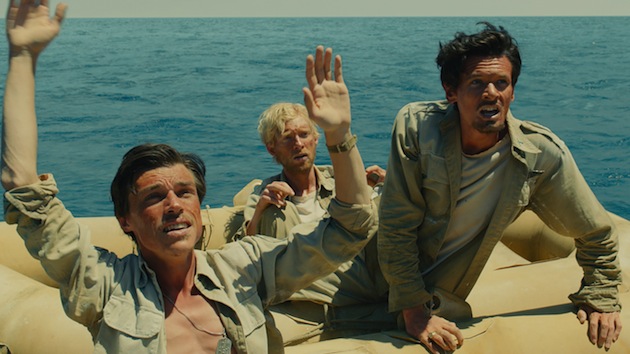
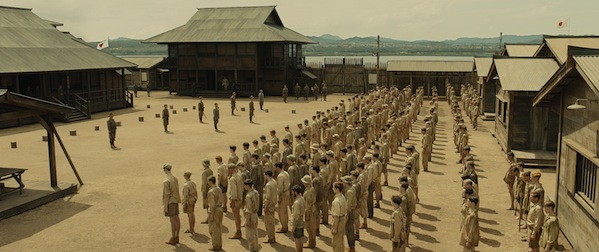
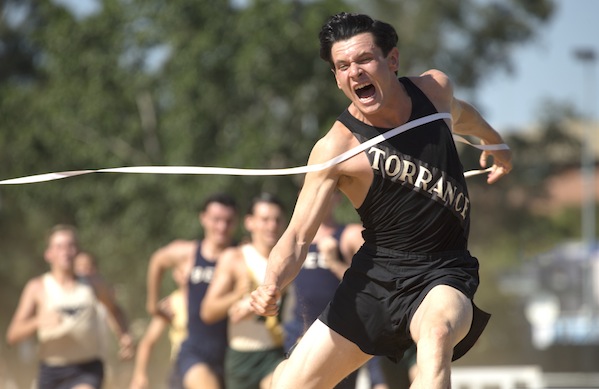










Leave a Reply